Technology, environmental friendliness and art: incineration plant in Vienna
Categories: Design and Architecture | Europe
By Pictolic https://pictolic.com/article/technology-environmental-friendliness-and-art-incineration-plant-in-vienna.htmlThere is an unusual attraction in Vienna, located in the very center of the Austrian capital. This is the Spittelau incinerator, a bright architectural creation of the Austrian artist Friedensreich Hundertwasser.
Travel blogger from St. Petersburg Alexander Shevchenko showed an unusual factory building in the Art Nouveau style from all sides.
(10 photos in total)
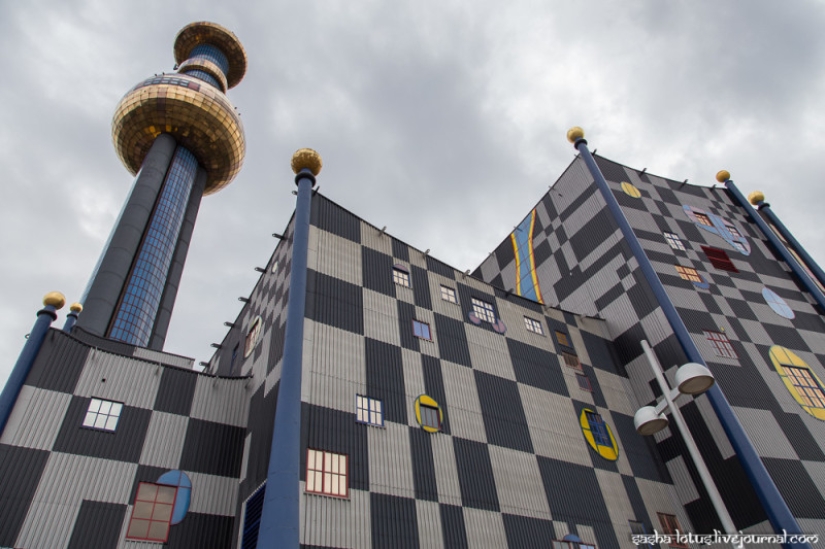
The residents of the Austrian capital are more lenient towards the gaudy building of the Spittelau incinerator, which provides heat to tens of thousands of houses in Vienna, than towards Hundertwasser's other project, a biomorphic residential eco-house. There might not have been a fairy—tale castle with a tower - the architect did not immediately agree to the design of an important structure.
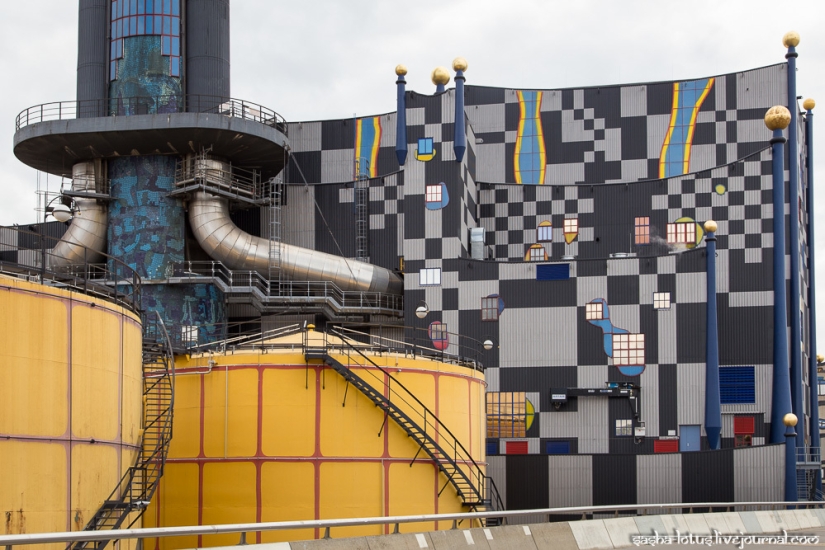
The original project of Spittelauwas to solve two tasks simultaneously: to ensure the recycling of garbage and heat supply to the 9th district of Vienna.
Already during the construction, in 1969-1971, discussions were raging about the release of harmful dioxins into the atmosphere. The political parties of the opposition tried to use the outstanding chance to accuse the incumbent mayor of negligence, and the owners of landfills and landfills for the disposal of human waste had their obvious commercial interest in not burning garbage, and even, in fact, surrounded by municipal buildings and residential buildings.
Anyway, Spittelau was completed to provide heat to the city hospital. The original factory building was badly damaged by a fire in 1987, then the mayor Helmut Zilk turned to Friedensreich Hundertwasser, who became a popular propagandist of ideas about the harmony of nature and architecture, with a proposal to give the new Spittelau a colorful, visually pleasing and, most importantly, eco-friendly appearance.

As an ardent opponent of garbage in principle, Hundertwasser, almost without hesitation, rejected the mayor's proposal. However, after consulting with environmentalists, the architect reconsidered his decision and agreed to turn the municipal plant into a work of art, but on one condition. The plant should be equipped with the latest technology to minimize harmful emissions into the atmosphere.
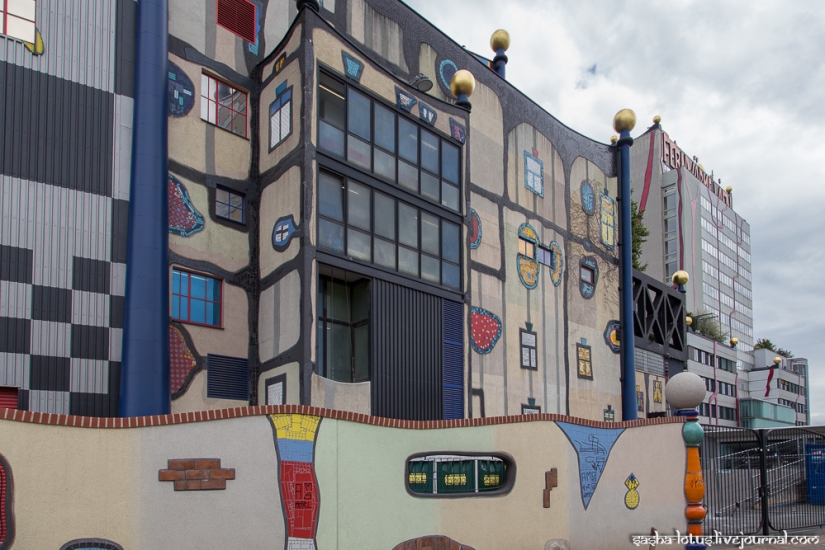
The new project, completed in 1992, used typical building materials: concrete, steel, glass, ceramic tiles and enamel. By boycotting the generally accepted architectural concepts of straight lines and unified window sizes, Hundertwasser remained true to his style and beliefs and made Spittelau easily recognizable.
The plant is more like a fairy-tale castle, descended from the pages of "Alice in Wonderland" or "The Wizard of Oz". The plastered facade with asymmetrically arranged windows and seemingly randomly scattered decorative elements made of broken tiles smoothly gives way to corrugated metal with an arbitrary checkerboard pattern of completely different sizes and shapes.

Hundertwasser was particularly careful in choosing the color scheme of the building and the design of individual elements. Each shape and color carries different ideas related to Vienna or the theme of environmental friendliness.
Multicolored enameled window frames randomly scattered on the walls of the plant, and chimneys symbolize rotating pieces of garbage to give visitors a superficial understanding of the technological processes that occur inside. Colored windows also characterize both the heyday and wealth, as well as the stagnation of modern society.
Some windows are transparent, others are made of frosted glass — Hundertwasser continues to implement his theory of "freedom of windows", no monotony and standardization.
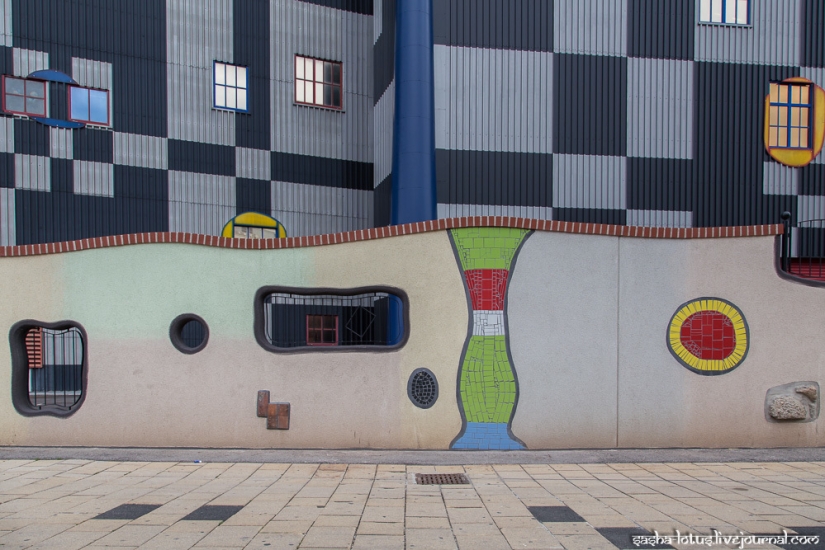
The blue color symbolizes the sky, clean air and clean water, yellow — fire, gold — a bright future where humanity lives in harmony with nature. It is easy to notice that vertical blue pillars stretching to the sky at the corners of the building are crowned with yellow spheres, forming a kind of torches, which is unknowingly perceived only as another quirk of the architect, but in fact carries a symbolic reference to the process of burning garbage and smoke escaping into the atmosphere.
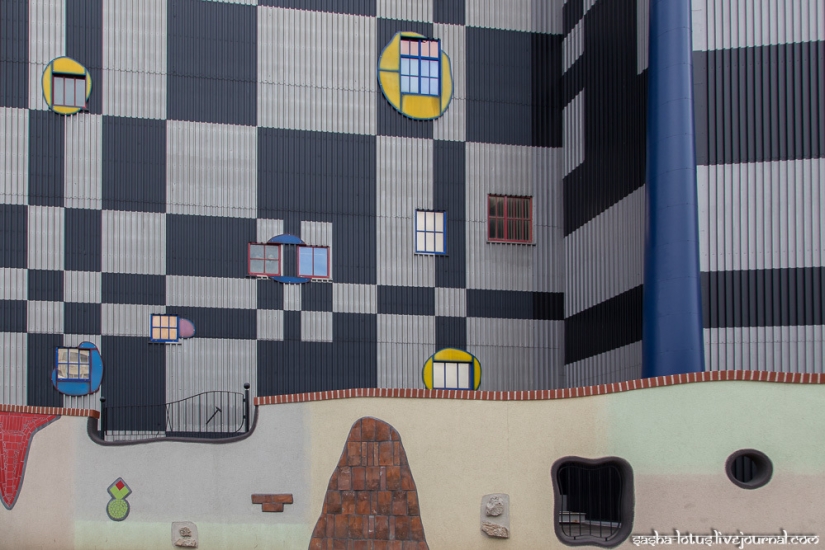
Black and white are typical colors of the Vienna Secession, a creative association of Viennese artists in the late XIX — early XX century. According to Hundertwasser, in the context of the Spittelau project, they represent a contrast between ash, coal and light. In addition, an uneven chess square is a protest against uniformity in architecture.
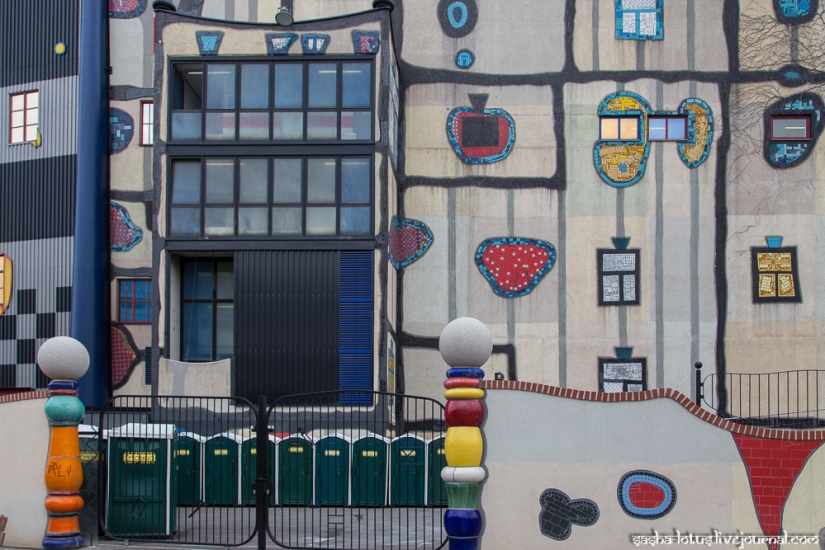
Spittelau, a thermal waste recycling plant, is an example of what it is worth to move away from the impersonal rational architecture from which we all suffer, and be inspired by the creative idea of harmony with nature. This is a manifesto against anonymity in our cities. I know that, focusing on the future, it will take a lot of endurance to bring such ideas to life, because they are condemned and ridiculed by the current government."
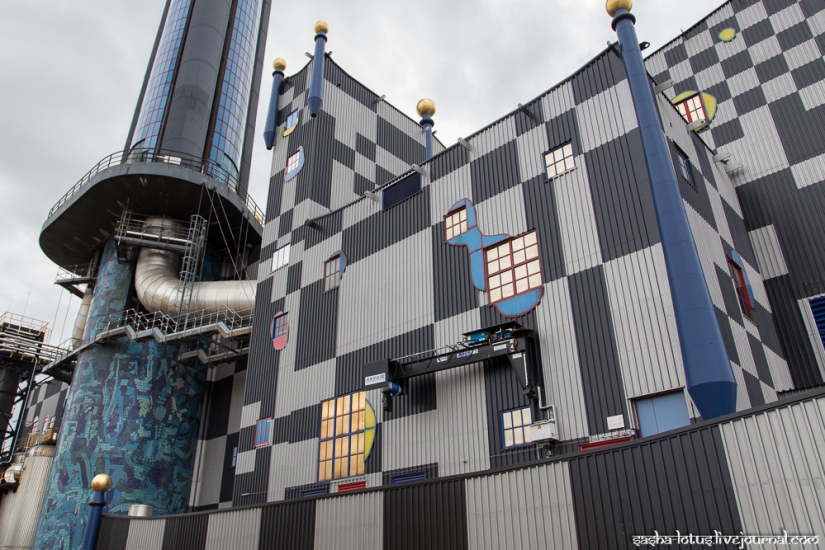
Up to 250,000 tons of garbage per year are processed at Spittelau. The plant is integrated into the city's heat supply system and provides 60 MW of thermal energy for basic needs. In case of peak activity, 5 additional gas and gas-oil boiler tanks are installed, capable of producing another 400 MW of energy. Spittelau provides heat to more than 60,000 homes and municipal institutions in the Austrian capital.
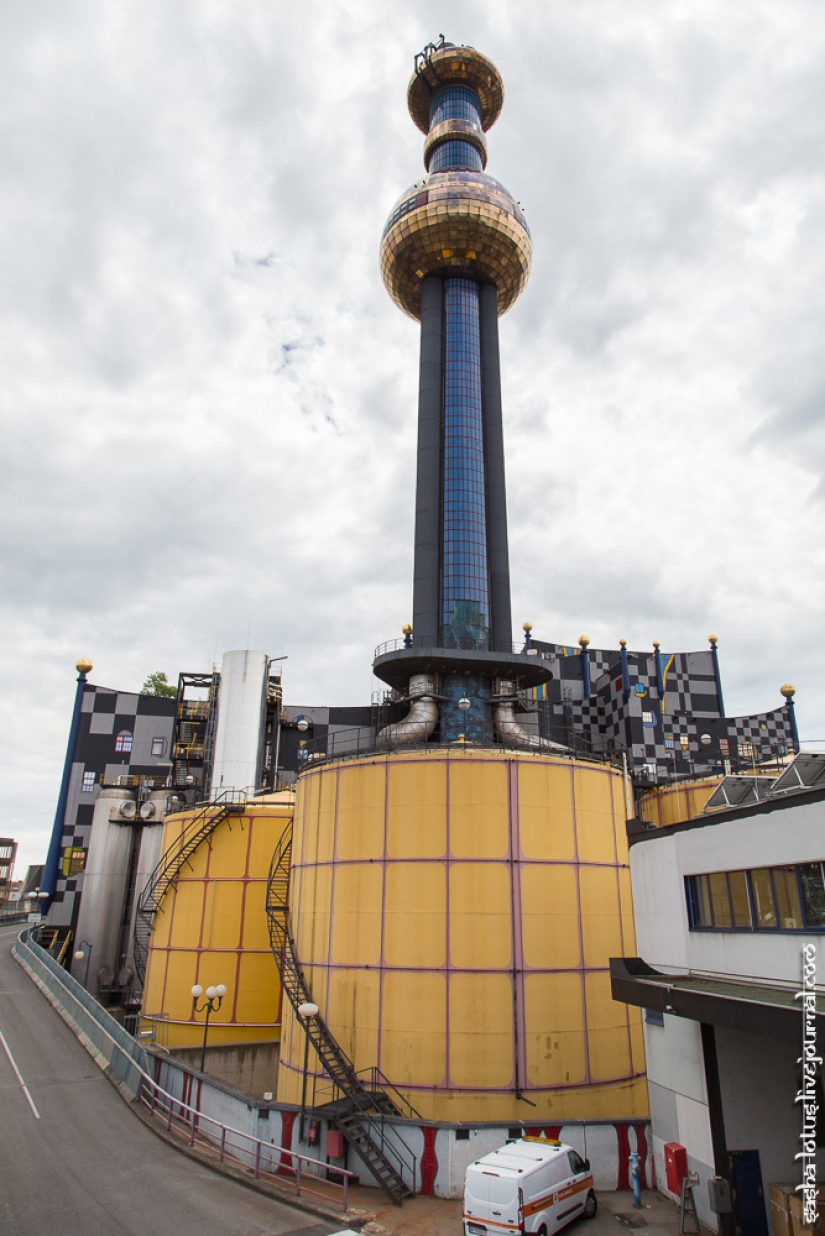
So the authorities of Vienna managed to catch several birds with one stone:
1. To provide heat supply to the district by locating the incinerator plant not outside the city, but practically next door to residential buildings, saving on pipelines for hot water supply.
2. By installing state-of-the-art flue gas cleaning equipment, reduce dioxin emissions to a minimum (less than 1 gram per year).
3. Finally, thanks to Hundertwasser, create another place of attraction for tourists. Especially curious and enthusiastic about "green" technologies should sign up for a tour of the plant, the rest can get to the metro station of the same name for free and look at Spittelau, which even in cloudy and cloudy weather creates a sense of a fairy tale.
Keywords: Austria | Vienna | Factory | Garbage
Post News ArticleRecent articles

Kitchen – one of the most popular places in the world. Here is the mystery of cooking a favorite food, family gatherings, ...

Man cave, or "man cave" — is embodied in the life of children's dreams of their own cozy nook where you can relax from bustle and ...
Related articles

Marvin Himeyer — a simple American hard worker, faced with the arbitrariness of a large corporation and city authorities. When it ...

An eyewitness, a user of "Picaboo", told about the reverse side of working in factories in China. Everyone knows that the Chinese ...

The Mauthausen concentration camp was located 20 kilometers east of Linz, the administrative center of Upper Austria. It was the ...

In a world where fashion and marketing have long ceased to surprise, House of Oddities has gone one step further—it's ...